| Wednesday, September 14 | |||||||||||||||||||||||||||||||||||||||||||||||||||||||||||||
| 16:30 | |||||||||||||||||||||||||||||||||||||||||||||||||||||||||||||
|
Claudia Prediger
CAST e.V.

|
BIOSIG welcome reception (Starting time 16:30) and EAB Award ceremony (Starting time 19:30)
|
||||||||||||||||||||||||||||||||||||||||||||||||||||||||||||
Thursday, September 15 BIOSIG - MAIN CONFERENCE - |
|||||||||||||||||||||||||||||||||||||||||||||||||||||||||||||
| 10:00 | |||||||||||||||||||||||||||||||||||||||||||||||||||||||||||||
|
Marta Gomez-Barrero
Hochschule Ansbach
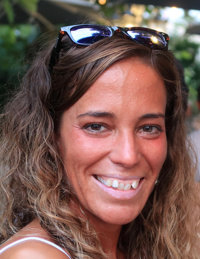
|
BIOSIG Conference Opening
|
||||||||||||||||||||||||||||||||||||||||||||||||||||||||||||
| Chair: Marta Gomez-Barrero | |||||||||||||||||||||||||||||||||||||||||||||||||||||||||||||
| 10:10 | |||||||||||||||||||||||||||||||||||||||||||||||||||||||||||||
|
Rosario Arjona
Universidad de Sevilla
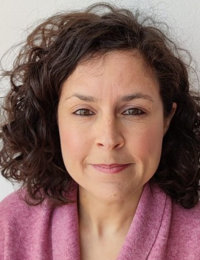
|
A Quantum-Resistant Face Template Protection Scheme using Kyber and Saber Public Key Encryption Algorithms
This work proposes the use of lattice-based Kyber and Saber public key encryption algorithms (from the NIST post-quantum cryptography standardization process) together with homomorphic encryption in a face recognition system. Experimental results show that the recognition performance is preserved, achieving small sizes of protected templates and keys, and short execution times. The parameter sets considered achieve security levels of 128, 192 and 256 bits. |
||||||||||||||||||||||||||||||||||||||||||||||||||||||||||||
| 10:30 | |||||||||||||||||||||||||||||||||||||||||||||||||||||||||||||
|
Simon Kirchgasser
University of Salzburg
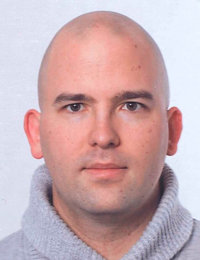
|
Template Protection: On the need to adapt the current Unlinkability Evaluation Protocol
y the performed template protection experiments using not only randomly selected keys, but also considering the best of insufficient (improper) keys, it was revealed that the standard unlinkability evaluation protocol is influenced by the key selection. Hence, it is recommended to use both mentioned key types to analyse template protection methods. This means that the protocol has to be fine-tuned, in so far that for the best of the worst key choice (which then has to be used in the protocol) unlinkability still needs to be given. |
||||||||||||||||||||||||||||||||||||||||||||||||||||||||||||
| 10:50 | |||||||||||||||||||||||||||||||||||||||||||||||||||||||||||||
|
Hidetsugu Uchida
Fujitsu Ltd.

|
DeDiM: De-identification using a diffusion model
We propose a novel de-identification using diffusion model (DeDiM). The DeDiM manipulates shapes of face parts to make its be difficult to judge the identity by face recognition systems. The experiments in the study shows that DeDiM is more robust against unknown recognition models than adversarial example-based de-identification methods. |
||||||||||||||||||||||||||||||||||||||||||||||||||||||||||||
| 11:10 | Break | ||||||||||||||||||||||||||||||||||||||||||||||||||||||||||||
| Chair: Christian Rathgeb | |||||||||||||||||||||||||||||||||||||||||||||||||||||||||||||
| 11:40 | |||||||||||||||||||||||||||||||||||||||||||||||||||||||||||||
|
Laurent Colbois
Idiap Research Institute

|
On the detection of morphing attacks generated by GANs
New types of morphing attacks exploiting Generative Adversarial Networks have been developed in the past few years. We establish an overview of the detection capability of those “deep” morphs, using both linear classifiers based on handcrafted features, and deep neural networks. A pretrained generic GAN-image detector performs best, but some more interpretable solutions, based on Local Binary Patterns features, also showcase interesting properties, in particular in a score-fusion setting. |
||||||||||||||||||||||||||||||||||||||||||||||||||||||||||||
| 12:00 | |||||||||||||||||||||||||||||||||||||||||||||||||||||||||||||
|
Pedro C. Neto
FEUP & INESC TEC

|
OrthoMAD: Morphing Attack Detection Through Orthogonal Identity Disentanglement
Differently from other attacks, Face Morphing attacks rely on the merge of two identities. We propose a new disentanglement approach based on a novel regularization term based on the orthogonality of two identity vectors. |
||||||||||||||||||||||||||||||||||||||||||||||||||||||||||||
| 12:20 | Lunch Break | ||||||||||||||||||||||||||||||||||||||||||||||||||||||||||||
| Chair: Andreas Uhl | |||||||||||||||||||||||||||||||||||||||||||||||||||||||||||||
| 13:20 | |||||||||||||||||||||||||||||||||||||||||||||||||||||||||||||
|
Uwe Seidel
Bundeskriminalamt (BKA)

|
KEYNOTE
Recent developments and challenges for the identity (document) ecosystem
Identity and especially identity documents are subject to a rapid technological change: the introduction of biometrics and the megatrend of digitization lead to new convenient solutions and facilitating use cases such as Digital Travel Credentials, but will the security of the application and data keep abreast with the new possibilities? |
||||||||||||||||||||||||||||||||||||||||||||||||||||||||||||
| 14:05 | |||||||||||||||||||||||||||||||||||||||||||||||||||||||||||||
|
Alexander Unnervik
Idiap Research Institute

|
An anomaly detection approach for backdoored neural networks: face recognition as a case study
Backdoor attacks allow an attacker to embed functionality jeopardizing proper behavior of any algorithm, machine learning or not. This hidden functionality can remain inactive for normal use of the algorithm until activated by the attacker. Given how stealthy backdoor attacks are, consequences of these backdoors could be disastrous if such networks were to be deployed for applications as critical as border or access control. In this paper, we propose a novel backdoored network detection method based on the principle of anomaly detection, involving access to the clean part of the training data and the trained network. We highlight its promising potential when considering various triggers, locations and identity pairs, without the need to make any assumptions on the nature of the backdoor and its setup. We test our method on a novel dataset of backdoored networks and report detectability results with perfect scores. |
||||||||||||||||||||||||||||||||||||||||||||||||||||||||||||
| 14:25 | |||||||||||||||||||||||||||||||||||||||||||||||||||||||||||||
|
Muku Akasaka
Shizuoka University
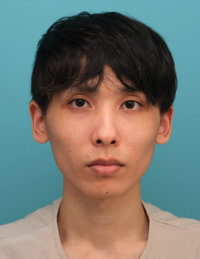
|
Model-Free Template Reconstruction Attack with Feature Converter
State-of-the-art template reconstruction attacks assume that an adversary has access part or whole of the functionality of a target model. However, in a practical scenario, rigid protection of the target system prevents them from gaining knowledge of the target model. In this paper, we propose a novel template reconstruction attack method utilizing a feature converter. The feature converter enables an adversary to reconstruct an image from a corresponding compromised template about the target model. The proposed method was evaluated with qualitative and quantitative measures. We achieved the Successful Attack Rate(SAR) of 0.90 on without knowledge Labeled Faces in the Wild Dataset(LFW) with compromised templates of only 1280 identities. |
||||||||||||||||||||||||||||||||||||||||||||||||||||||||||||
| 14:45 | Break | ||||||||||||||||||||||||||||||||||||||||||||||||||||||||||||
| Chair: Raymond Veldhuis | |||||||||||||||||||||||||||||||||||||||||||||||||||||||||||||
| 15:15 | |||||||||||||||||||||||||||||||||||||||||||||||||||||||||||||
|
Olaf Henniger
Fraunhofer IGD

|
Utility-based performance evaluation of biometric sample quality assessment algorithms
The quality score of a biometric sample is expected to predict the sample’s utility, but a universally valid definition of utility is missing. A harmonized definition of utility would be useful to facilitate the comparison of biometric sample quality assessment algorithms. This paper generalizes the utility of a biometric sample as normalized difference between the means of non-mated and mated comparison scores with respect to this sample. |
||||||||||||||||||||||||||||||||||||||||||||||||||||||||||||
| 15:35 | |||||||||||||||||||||||||||||||||||||||||||||||||||||||||||||
|
Simon Kirchgasser
Univeristy of Salzburg

|
Fingervein Sample Image Quality Assessment using Natural Scene Statistics
Natural Scene Statistics as used in non-reference image quality measures are proposed to be used as fingervein sample quality indicators. While NIQE and BRISQUE trained on common images with usual distortions do not work well in the fingervein quality context, their variants being trained on high and low quality fingervein sample data behave as expected from a biometric quality estimator. Experiments involve two publicly available fingervein datasets and two distinct template representations. The proposed (trained) quality measures are compared to a set of classical fingervein quality metrics which underlines their highly promising behaviour. |
||||||||||||||||||||||||||||||||||||||||||||||||||||||||||||
| 15:55 | |||||||||||||||||||||||||||||||||||||||||||||||||||||||||||||
|
Tim Rohwedder
Hochschule Darmstadt

|
Analysis of Minutiae Quality for Improved Workload Reduction in Fingerprint Identification
The workload of biometric identification in large fingerprint databases poses a challenging problem. Some of the state-of-the art approaches rely on triangles of minutia points generated by Delaunay triangulation, which are then used for indexing. In this paper, we investigate how quality estimation at the minutia level can improve the performance of such algorithms and hence the system workload. |
||||||||||||||||||||||||||||||||||||||||||||||||||||||||||||
| 16:15 | Break | ||||||||||||||||||||||||||||||||||||||||||||||||||||||||||||
| CHAIR: Naser Damer and Christian Rathgeb | |||||||||||||||||||||||||||||||||||||||||||||||||||||||||||||
| 16:45 | |||||||||||||||||||||||||||||||||||||||||||||||||||||||||||||
|
|
Poster Session
|
||||||||||||||||||||||||||||||||||||||||||||||||||||||||||||
| 18:30 | Barbecue and get together | ||||||||||||||||||||||||||||||||||||||||||||||||||||||||||||
| Friday, September 16, Chair: Kiran Raja | |||||||||||||||||||||||||||||||||||||||||||||||||||||||||||||
| 09:00 | |||||||||||||||||||||||||||||||||||||||||||||||||||||||||||||
|
Luisa Verdoliva
University Federico II of Naples, Italy
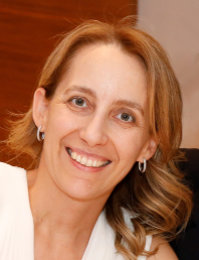
|
KEYNOTE
Deepfake detection: state-of-the-art and future directions
In recent years there have been astonishing advances in AI-based synthetic media generation. Thanks to deep learning-based approaches it is now possible to generate data with a high level of realism. While this opens up new opportunities for the entertainment industry, it simultaneously undermines the reliability of multimedia content and supports the spread of false or manipulated information on the Internet. This is especially true for human faces, allowing to easily create new identities or change only some specific attributes of a real face in a video, so-called deepfakes. In this context, it is important to develop automated tools to detect manipulated media in a reliable and timely manner. This talk will describe the most reliable deep learning-based approaches for detecting deepfakes, with a focus on those that enable domain generalization. The results will be presented on challenging datasets with reference to realistic scenarios, such as the dissemination of manipulated images and videos on social networks. Finally, new possible directions will be outlined. |
||||||||||||||||||||||||||||||||||||||||||||||||||||||||||||
| 09:45 | |||||||||||||||||||||||||||||||||||||||||||||||||||||||||||||
|
Bilgesu Sumer
KU Leuven

|
When do the images of biometric characteristics qualify as special categories of data under the GDPR?: a systemic approach to biometric data processing
This conference paper scrutinizes the difference between biometric data’s technical (pursuant to ISO standards) and legal meaning under the GDPR. After analyzing the European Data Protection Board’s (EDPB) guidance and the recent Clearview AI decisions, the paper interprets the GDPR in two ways to address the confusing status quo:
|
||||||||||||||||||||||||||||||||||||||||||||||||||||||||||||
| 10:05 | |||||||||||||||||||||||||||||||||||||||||||||||||||||||||||||
|
Catherine Jasserand
KU Leuven
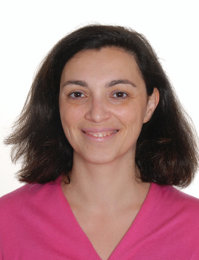
|
Research, the GDPR, and Mega Biometric Training Datasets: Opening the Pandora Box
The paper addresses a legal issue relevant to the research community in EU: whether researchers can constitute large-scale biometric training datasets under the EU data protection rules (GDPR). It clarifies a misconception concerning the re-usability of online accessible data and discusses the challenges faced by researchers to find an adequate legal basis to scrape a vast amount of personal data for research purposes. |
||||||||||||||||||||||||||||||||||||||||||||||||||||||||||||
| 10:25 | Break | ||||||||||||||||||||||||||||||||||||||||||||||||||||||||||||
| Chair: Massimiliano Todisco | |||||||||||||||||||||||||||||||||||||||||||||||||||||||||||||
| 10:55 | |||||||||||||||||||||||||||||||||||||||||||||||||||||||||||||
|
Christian Rathgeb
Secunet

|
Fusion of Face Demorphing and Deep Face Representations for Differential Morphing Attack Detection
Algorithm fusion is frequently employed to improve the accuracy of pattern recognition tasks. This particularly applies to biometrics including attack detection mechanisms. In this work, we apply a fusion of two differential morphing attack detection methods, i.e. Demorphing and Deep Face Representations. Experiments are performed in a cross-database scenario using high-quality face morphs along with realistic live captures. Obtained results reveal that a weighted sum-based score-level fusion of Demorphing and Deep Face Representations improves the morphing attack detection accuracy. With the proposed fusion, a detection equal error rate of 4.9\% is achieved, compared to detection equal error rates of 5.6\% and 5.8\% of the best individual morphing attack detection methods, respectively. |
||||||||||||||||||||||||||||||||||||||||||||||||||||||||||||
| 11:15 | |||||||||||||||||||||||||||||||||||||||||||||||||||||||||||||
|
Una Kelly
University of Twente
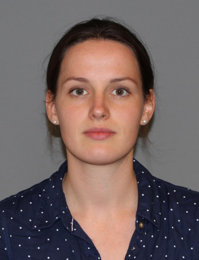
|
Worst-Case Morphs: a Theoretical and a Practical Approach
Face Recognition (FR) systems have been shown to be vulnerable to morphing attacks. We examine exactly how challenging morphs can become. By showing a worst-case construction in the embedding space of an FR system and using a mapping from embedding space back to image space we generate images that show that this theoretical upper bound can be approximated if the FR system is known. The resulting morphs can also succesfully fool unseen FR systems and are useful for exploring and understanding the weaknesses of FR systems. Our method contributes to gaining more insight into the vulnerability of FR systems. |
||||||||||||||||||||||||||||||||||||||||||||||||||||||||||||
| 11:35 | Break | ||||||||||||||||||||||||||||||||||||||||||||||||||||||||||||
| Chair: Christoph Busch | |||||||||||||||||||||||||||||||||||||||||||||||||||||||||||||
| 11:55 | |||||||||||||||||||||||||||||||||||||||||||||||||||||||||||||
|
Bernhard Kohn
AIT Austrian Institute of Technology GmbH

|
Case study of the acquisition of contactless fingerprints in a real police setting
We present a case study of a comprehensive comparison of real fingerprint data captured by national police officers in real-world situations. The goal of this study is to compare data captured with a typical contact-based fingerprint device with data captured with a new contactless device. In addition, feedback from end users (national police officers) regarding the collection process is reported. |
||||||||||||||||||||||||||||||||||||||||||||||||||||||||||||
| 12:15 | |||||||||||||||||||||||||||||||||||||||||||||||||||||||||||||
|
Yoshinori Koda
NEC Corporation

|
Fundamental Study of Neonate Fingerprint Recognition Using Fingerprint Classification
UNICEF reported many of 2.4 million cases of deaths in the first 28 days of life were preventable through appropriate vaccination. It apparently needs an assistance of identification methods for newborn. This paper develops a fingerprint scanner having 2,674 ppi high resolution CMOS sensor working with physical designs especially crafted for the purpose of acquiring newborn fingerprint by merging the feedback from users at research site about former prototypes and proposes a neonate fingerprint identification method based on fingerprint classification. |
||||||||||||||||||||||||||||||||||||||||||||||||||||||||||||
| 12:35 | Lunch Break | ||||||||||||||||||||||||||||||||||||||||||||||||||||||||||||
| Chair: Naser Damer | |||||||||||||||||||||||||||||||||||||||||||||||||||||||||||||
| 13:35 | |||||||||||||||||||||||||||||||||||||||||||||||||||||||||||||
|
Md Mahedi Hasan
West Virginia University

|
Deep Coupled GAN-Based Score-Level Fusion for Multi-Finger Contact to Contactless Fingerprint Matching
Interoperability between contact to contactless images in fingerprint matching is a key factor in the success of contactless fingerprinting devices, which have recently witnessed an increasing demand for biometric authentication due to several limitations of the contact-based fingerprinting system. In this paper, to improve interoperability, we project both the fingerphoto and the fingerprint into a common embedding subspace using a coupled generative learning framework (CpGAN) to find the hidden relationship between the feature embedding. Comparisons of the proposed CpGAN model with state-of-the-art methods and two top-performing commercial off-the-shelf matchers on three challenging datasets verify the effectiveness of our method. |
||||||||||||||||||||||||||||||||||||||||||||||||||||||||||||
| 13:55 | |||||||||||||||||||||||||||||||||||||||||||||||||||||||||||||
|
Dominik Söllinger
University of Salzburg

|
Can point-cloud based neural networks learn fingerprint variability?
Subject- and environmental-specific variations affect the fingerprint recognition process. We propose the use of genuine comparison scores as a measure of variability and demonstrate that the publicly available PLUS-MSL-FP dataset indeed exhibits large natural variations. Furthermore, we showcase that point-cloud (set) based neural networks are promising candidates for processing fingerprint imagery. |
||||||||||||||||||||||||||||||||||||||||||||||||||||||||||||
| 14:15 | |||||||||||||||||||||||||||||||||||||||||||||||||||||||||||||
|
Tugce Arican
University of Twente
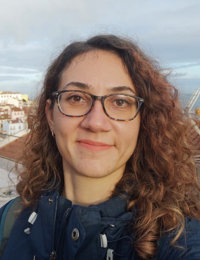
|
Fingers Crossed: An Analysis of Cross-Device Finger Vein Recognition
Finger veins are one of the emerging biometric traits in biometric recognition. Despite the growing literature on finger vein recognition, little interest has been shown in the impact of acquisition devices on recognition performance. This work discuss the challenges introduced by different finger vein acquisition devices, and investigates possibility of a cross-device finger vein recognition. |
||||||||||||||||||||||||||||||||||||||||||||||||||||||||||||
| 14:35 | Break | ||||||||||||||||||||||||||||||||||||||||||||||||||||||||||||
| Chair: Marta Gomez-Barrero | |||||||||||||||||||||||||||||||||||||||||||||||||||||||||||||
| 15:05 | |||||||||||||||||||||||||||||||||||||||||||||||||||||||||||||
|
Claude Bauzou
Idemia
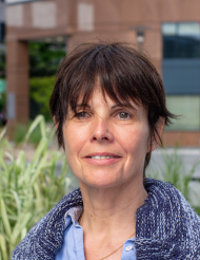
|
KEYNOTE
Document Validation and Fraud Detection in iMARS
This talk will explain how, in the context of the iMARS research funded project, a group of industrial actors are working together to find innovative solutions to detect ID document fraud using mobile platforms. The presentation will explain the work carried out, and the different approaches considered, and will also consider the benefit for industrial partners to work together in the same project. |
||||||||||||||||||||||||||||||||||||||||||||||||||||||||||||
| 15:50 | |||||||||||||||||||||||||||||||||||||||||||||||||||||||||||||
|
Marta Gomez-Barrero
Hochschule Ansbach
|
Awards/ Closing Remarks
|
||||||||||||||||||||||||||||||||||||||||||||||||||||||||||||
If you have any questions please contact:
Marta Gomez-Barrero
Hochschule Ansbach
Email: biosig@lists.unibw.de
Simone Zimmermann
CAST e.V.
Tel.: +49 6151 869-230
Email: simone.zimmermann![]() cast-forum.de
cast-forum.de
| ID:SMART 2026 Workshop | 18.-19.02.2026 |
| Recht und IT-Sicherheit | 05.03.2026 |
| 25th International Conference of the Biometrics Special Interest Group (BIOSIG 2026) | 25.-26.11.2026 |